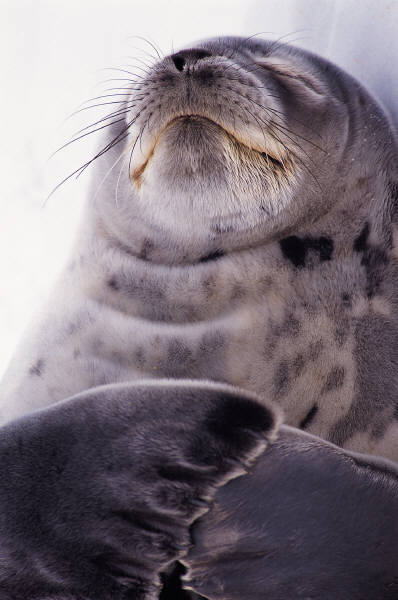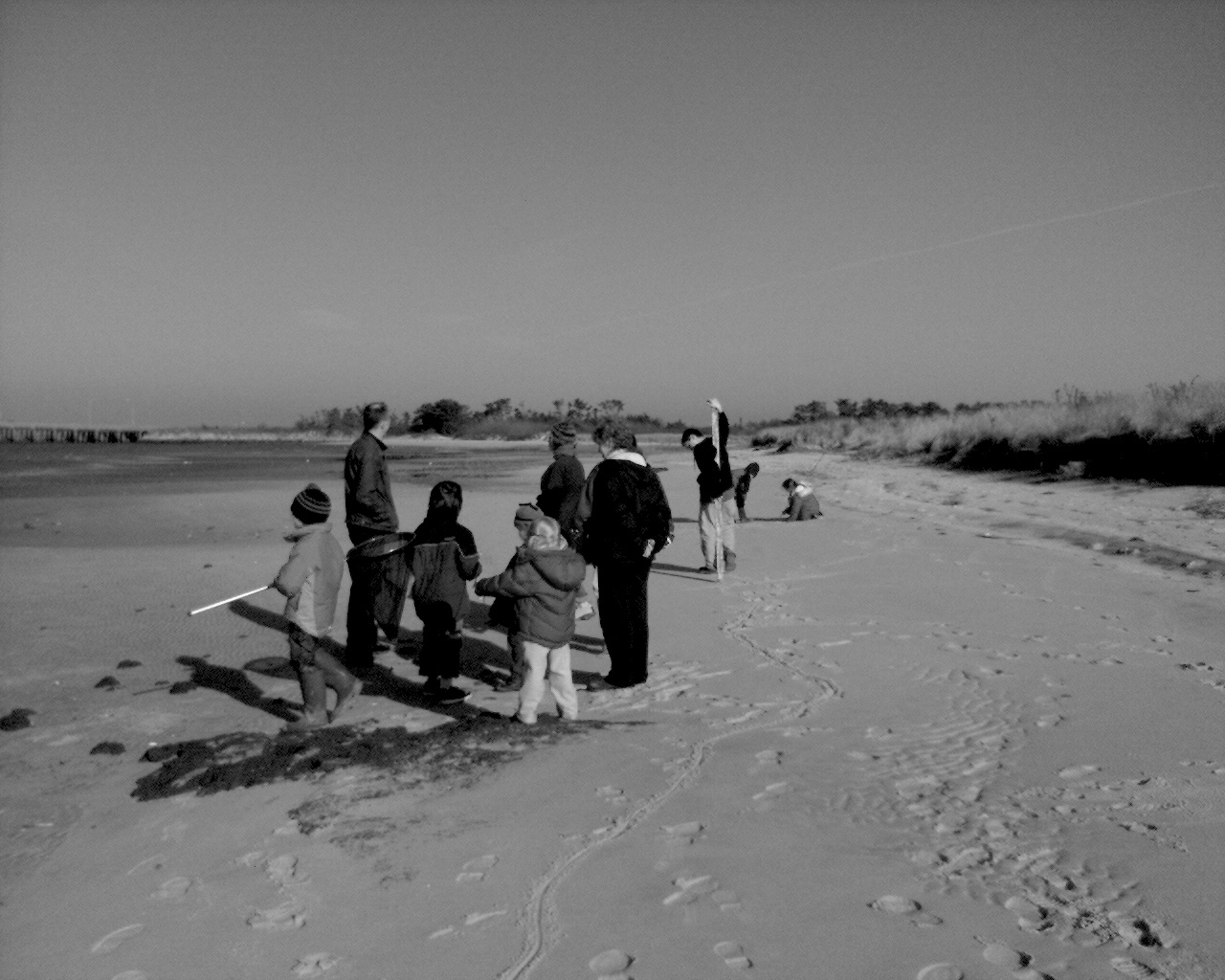The Winter Hike
The temperature was below freezing. The wind was blowing. The day was short and wintry. So, we took a hike! A few years ago, we heard there were seal sightings along the south shore, and we decided to amble out and brave the weather, perchance to spot a pinniped. We chose the bay side of the beach, as there were many small islands there to provide quiet retreat for the seals. Piling out of the car, we scanned the beach, and saw, to our dismay, the usual flotsam and jetsam that so mar the beach in winter. We did not see any seals at a glance, but we decided to stretch our legs, and enjoy the sunny, if sub-freezing, day.
The kids ran ahead. The kids always run ahead, unless they see interesting things, and then they fall behind. The kids ran to what looked like a bag of garbage. My friend and I walked on slowly, chatting about kids and school, and all those things that moms talk about when the kids run ahead.
We looked up as one of the kids yelled, "It's a seal!" Then Paul, who was not quite 6, yelled, "It has no eyes!" Oh, ugh. The Coast Guard station was nearby, so I thought I might go and report a dead seal to them, or maybe stop at the station to make a call to the DEC. I called back to the kids, "Don't touch it!" Paul answered, "Oh! It has eyes!" Still too far to see clearly, I figured, rightly, that the seal had been sleeping, and we had disturbed it. I told the kids to stay well back. They cleared the way for us, delightedly squealing as we ran up to them. We got closer and saw a beautiful harbor seal. It blinked. It yawned. It gave the kids a very annoyed look. It rolled over, turned towards the bay, and undulated away, leaving us staring as it swam to the island a few yards off. It looked back twice, as if to see if we were going to stay in the nice sunny spot it had occupied so comfortably.
That was about 4 years ago, and we have not seen another seal since, but we have found many surprises, large and small, on our winter hikes, including hawks hunting, raccoons finding water on nearly-frozen ponds, ice floes, frozen lakes, streams, and waterfalls, moths in February, plant skeletons, nests, caves, and an island that had become a peninsula at low, frozen tide. We have seen bare, raw nature, and it's beautiful.
Frozen ponds are a favorite place to hike. Unless skating is allowed, or ice yachters whizzing by assure us that the ice is safe, we usually stay off the ice itself. But the ice is often inhabited by other, lighter creatures. In Queens, NY, we have seen, in mid-winter, a great blue heron strutting across the ice. We have seen ducks dabbling in the smallest unfrozen patches of water. And frozen below the clear surface, we have seen sand rippled by the last gentle waves before the temperatures dropped.
Around the pond, life is abundant, and after a snow, we find tracks of every kind. Last week we saw the tracks of the opossum, North America's only marsupial. Raccoon tracks are common, as are the tracks of smaller mammals like squirrels and mice. Bird tracks are the most common, and it's often an insurmountable challenge to discover which bird made which tracks. In coldest weather, the trickle of a spring may be the only water source for many animals, and the tracks leading to and from the trickle will wear a path in the ice or snow. Patience may reveal the thirsty visitors.
Preserving our hikes is easy with digital photography! In fact, when it is too cold to sit outdoors for long, we snap photos and copy them into our notebooks later, when we are inside and sipping cocoa. For drawing in winter, the out-of-print Sketching Outdoors in Winter is an invaluable guide. The stark landscapes are captured well in simple line drawings, and the instructions, written by Jim Arnosky, are simple. If you have Keeping a Nature Journal, you have plenty of great suggestions for winter journaling.
If you are inclined to a picnic in the winter, as we are, you might want to check out some of the Winter Holiday suggestions, like a hot pot cooked in a Dutch oven out of doors (we tried this in January for a Winter Holiday party, and it was a real hit!). Last week we had a small sandwich picnic, with a real always-winter-but-never-Christmas treat--rose-flavored Turkish Delight!
Interested in hearing more about seals? So were we! Here are a few books we found for different ages (no baby seals were killed in the making of this newsletter):
Seal and Sea Lions from Zoobooks is a great introduction to seals, and their cousins. We have seals, but you may have sea lions. You can find the difference with this book. Sammy the Seal is really a sea lion, but these books are fun for early readers. Both Cecily's Summer (for kids) and the Summer of Cecily (older kids or adults), by Nan Lincoln, tell the true story of a seal pup raised by a human "mom." Andre is another seal raised by humans. The Amazon link will lead you to several other books about Andre. He was a famous seal!
No matter how you look at winter, it can be a time of discovery. If you prefer to curl up with a good book, try my snowy reading list. If you want to take a hike and see who is out there, be prepared for a mini adventure! To help you on a winter hike, especially if you are in the colder climes, here's a quick list of things to take with you:
flashlight (days get dark quickly)
water (it's dryer than you think)
layers of warm clothing (you can always remove a layer if you get too warm)
a snack
extra socks
waterproof shoes or boots
extra mittens
a thermos with a hot beverage
collection bags
camera
binoculars or spotting scope
common sense
Get out! But be careful!
Back to Wild Monthly
Wild Monthly is brought to you by:
Science Kit
Free Shipping on all orders of $25 or more at ScienceKit.com
Enter code SKITFREE at checkout before 1/31.

